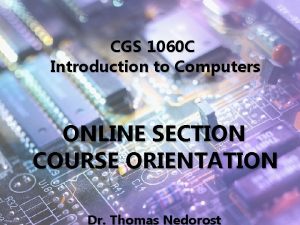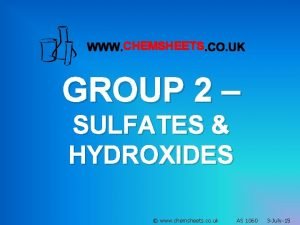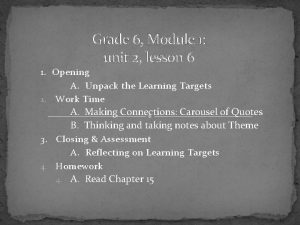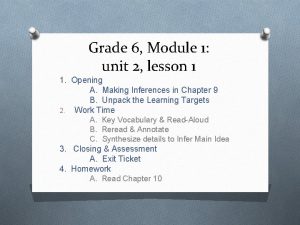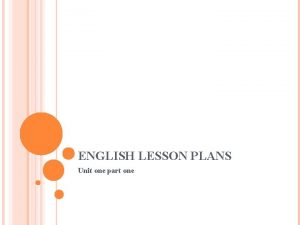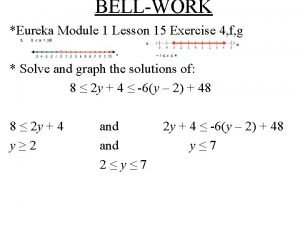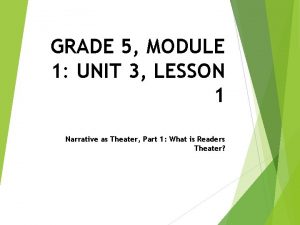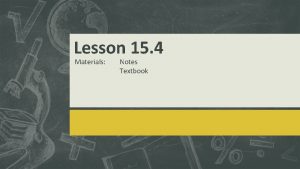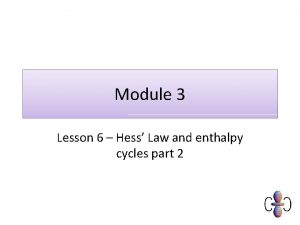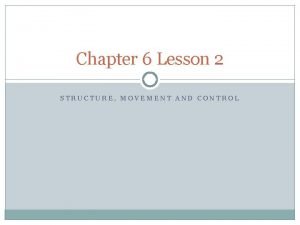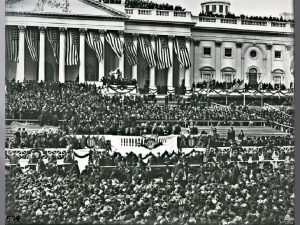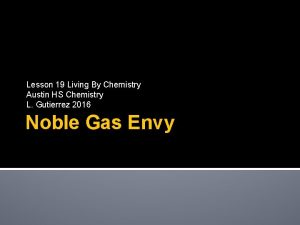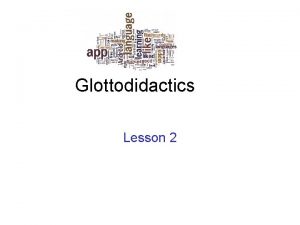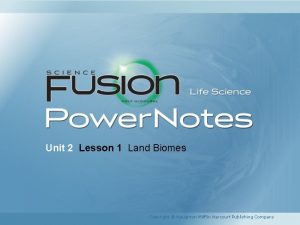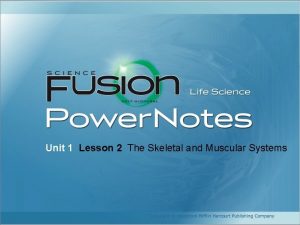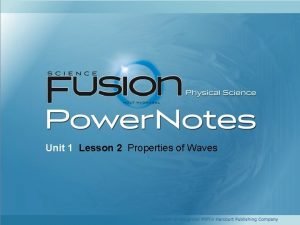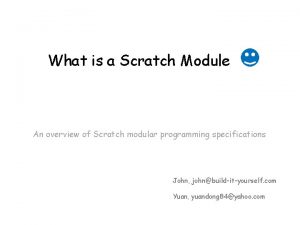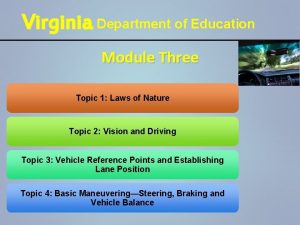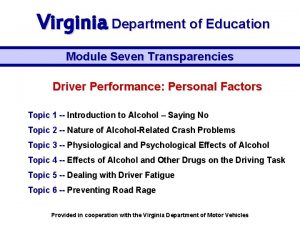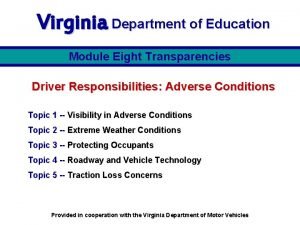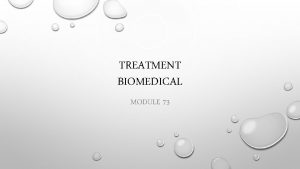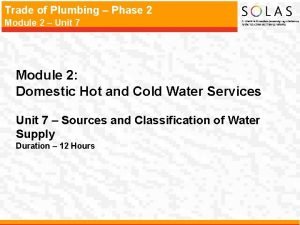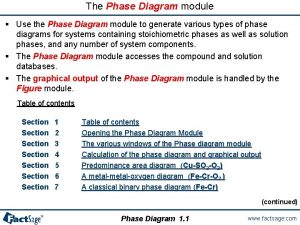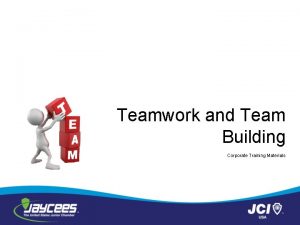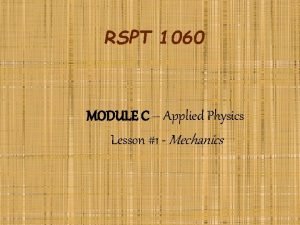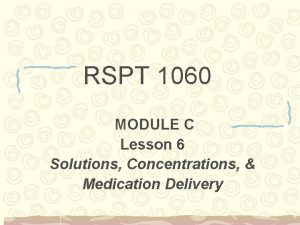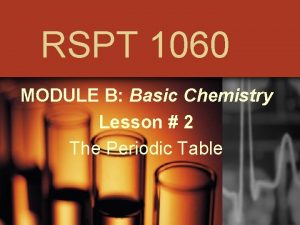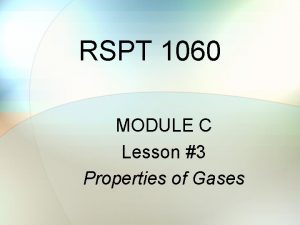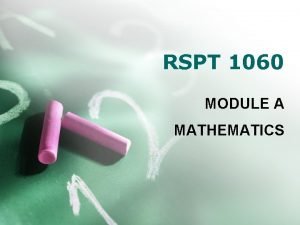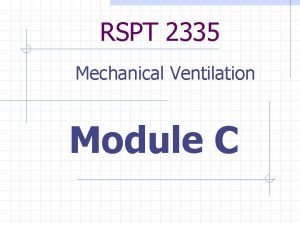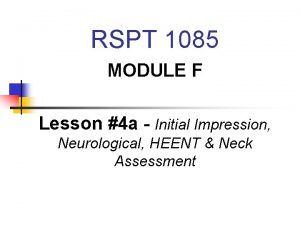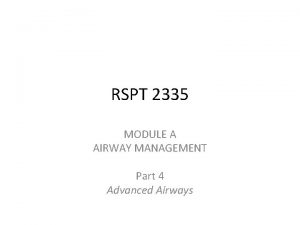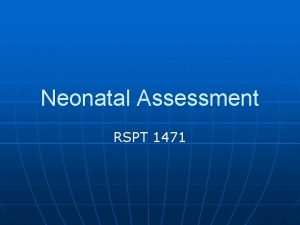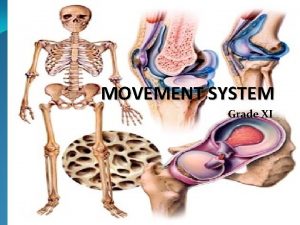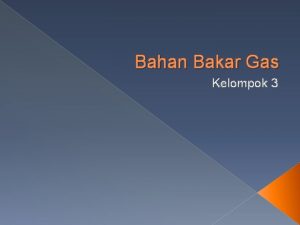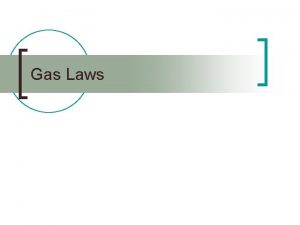RSPT 1060 MODULE C Lesson 5 GAS MOVEMENT












































































- Slides: 76

RSPT 1060 MODULE C Lesson 5 GAS MOVEMENT

Objectives • At the end of this module, the student will – – – Define terms associated with gas movement. Differentiate between flow, speed and velocity. Describe how flow is measured. Describe how velocity is measured. Differentiate between the types of flow. State how Poiseuille’s law is used to define the amount of pressure needed to move a fluid through a tube.

Objectives • At the end of this module, the student will – State the Reynold’s number where a transition from laminar to turbulent flow occurs. Describe the effects of gas velocity, gas density, tube radius, and viscosity on Reynold’s number. Differentiate between a low-flow oxygen delivery system and a high-flow oxygen delivery system. Differentiate between – – – • • • Jet mixing Bernoulli principle. Venturi principle

Objectives • At the end of this module, the student will – – State the effect on an increase in minute volume on oxygen delivery percentage with a high-flow oxygen delivery system. Given an FIO 2, determine the air: oxygen ratio. Given an FIO 2 and an oxygen flow rate, determine the total flow. Given an FIO 2, an oxygen flow rate, and a patient’s minute volume, determines if the total flow is adequate.

Terms Associated with A Fluid In Motion • FLUID – A substance that is capable of flowing and that changes its shape at a steady rate when acted upon by a force tending to change its shape and to assume the shape of its container. Includes both liquids and gases. • FLOW – The bulk movement of a substance through space. – Expressed as volume of fluid moved per unit of time. • Liters per minute (L/min) • Liters per second (L/sec)

Terms Associated with A Fluid In Motion • SPEED – The distance traveled per unit of time. – A scalar measurement. – Miles per hour or centimeters per second. • VELOCITY –The rate at which an object changes position. – A vector quantity. – Involves not only magnitude but also direction. – Miles per hour or centimeters per second in a specified direction.

Flow • Volume/Time minute 5 L 5 L • Force: Occurs as a result of a pressure gradient from high energy to low energy. – The pressure difference (gradient) that exists is also known as the driving pressure. • Measurement tool: – Flow meter

Velocity distance • Distance per unit time start with a direction. (vector quantity) minute finish • Force: Occurs as a result of a pressure gradient from high energy to low energy. • Measurement tool: – Ruler & watch and some mechanism to quantify direction.

Velocity and Flow • Since gas flow in and out of the lungs is directional, velocity can be assessed. • Gas flow (volume/time) can also be expressed as the velocity of the gas as it relates to the cross-sectional area it is moving through. – Flow = Cross-sectional area x velocity

Law of Continuity • The velocity of a fluid moving through a tube varies inversely with the cross-sectional area. – As the cross-sectional area decreases, the velocity increases to maintain a constant flow. – Example: A hose that is pinched results in an increased velocity to maintain a constant flow. • This follows the conservation of mass in that the amount of a fluid entering a tube must be the same as the amount leaving the tube. – This principle is used in jet and nozzles and clinically in nebulizers and gas entrainment devices.


• If you have a tube with a cross-sectional area of 5. 08 cm 2, and a gas moving at a velocity of 16. 4 cm/sec, the measured flow will be 5 L/min.

Additional Terms Associated With A Fluid In Motion • VISCOSITY – The property of a fluid that resists the force tending to cause the fluid to flow. – This can be due to thickness of the fluid or some other cause of adhesiveness between the fluid and the container. – Water vs. Ketchup • FRICTION – Surface resistance to relative motion caused by the rubbing of one object or surface against another. • DENSITY – Mass per unit of volume (mg/L)

Pressure and Flow of A Fluid • The pressure exerted by a static fluid is the same at all points along a horizontal tube. • When flow occurs, the pressure drops as a tube becomes further from the source of the pressure. – Gas flow in a plumbing system.

No Flow

Flow

Types of flow A. B. C. Laminar Turbulent Transitional

Laminar Flow • Smooth movement in a parabolic pattern through a smooth tube of fixed size. Velocity is greater at the center than along the walls due to friction. • Poiseuille’s Law defines the pressure required to produce a flow under these conditions • Flow pattern found in distal airways.

Poiseuille’s Law P = Driving pressure (to move gas through a tube) – fluid viscosity (n) – tube length (l) – – flow (�) radius (r)

Poiseuille’s Law • Consider an endotracheal tube A. B. 5 L/min. • If I need the same gas flow, what must happen to pressure (P) if I… – Increased length (l) needs ______ pressure – Decreased radius (r) needs ______ pressure – Decrease gas viscosity (n) needs ______ pressure • If I increase the gas flow (�), what must happen to pressure (P)? ______

Turbulent Flow • Molecules moving in many directions. – Multiple eddy currents. • Requires a greater driving pressure. – Poiseuille’s Law no longer applies. • Flow pattern found in larger airways. • Laminar flow become turbulent at a Reynold’s Number >2000. – Dimensionless number

Reynold’s Number v = linear velocity (distance/time) d = fluid density (weight/volume) r = tube radius (size of opening) h = fluid viscosity (thickness, stickiness)

Reynold’s Number What would allow gas to move freely in many directions? (more turbulent) v = linear velocity _____ d = fluid density ____ r = tube radius ____ h = fluid viscosity _______

Transitional Flow • A mixture of laminar and turbulent. • Similar to what is happening in the majority of the respiratory tract.

Fig 6 -21

Oxygen Therapy

Oxygen Equipment • If the alveolar oxygen is low (↓PAO 2), the arterial oxygen (Pa. O 2) will also be reduced. • The goal is to increase the alveolar oxygen level (PAO 2)by providing supplemental oxygen to the patient. • Four Categories of Oxygen Delivery Equipment – – Low Flow * Reservoirs Enclosures High Flow *

Estimating Patient Flow Needs • One of two methods can be used to determine the patient’s inspiratory flow rate and therefore the minimum flow needed by the device. OR

Example: Patient Flow Needs Minute Ventilation = 8 L/min Tidal Volume = 0. 4 L Respiratory Rate = 20 bpm Insp. Time = 1 sec

Low Flow Oxygen Delivery Systems • Devices: – Nasal Cannula – Nasal Catheter – Transtracheal Catheter (SCOOP)

Low Flow Systems and Inspiratory Flow • Device does not meet patient entire inspiratory flow needs. – Patient’s needs to draw in additional gas. – HAS NOTHING TO DO WITH THE FLOWMETER SETTING! – Provides low oxygen concentrations (22 -45%). • Some people include “Reservoir Systems” in this category as well. – Simple masks, Partial rebreathers, Nonrebreathers, Reservoir cannulas

Flow Needs • Adults typically have an inspiratory flow of 24 - 30 L/min. • Low flow devices provide ¼ – 8 L/min. of 100% O 2. • Flow difference must come from room air (21%) or reservoir (>21%).

Oxygen Concentration • Low flow devices have air & oxygen mixing at the patient’s airway. • O 2 concentration is variable and depends on the patient’s respiratory pattern. – A higher O 2 concentration is achieved when breathing is at a slower rate and a slow flow. • Less room air is brought into the system. – A lower O 2 concentration is achieved when breathing is at a higher rate & rapid flow.

Oxygen Delivery Devices High-Flow Systems

FIO 2 vs. FDO 2 • The “D” stands for delivered. • Technically speaking, oxygen devices “deliver” a specific amount of oxygen. • What is actually “inspired” is related to how much air is entrained and dilutes the oxygen flow. • Like…who cares?

High Flow Oxygen Delivery Systems • Devices: – Air-entrainment mask (venturi) * – Air-entrainment nebulizer * • • Aerosol Mask Tracheostomy Collar T-Bar Face Tent – Blender – Dual Flowmeters

Air Entrainment Nebulizer • • • Oxygen source Flow meter Nebulizer with sterile water Large bore tubing Drain bag Patient interface – – Aerosol mask Trach collar Face tent T-bar)

Fluid Entrainment • Air entrainment masks & nebulizers use a method of fluid mixing known as fluid entrainment. • First fluid flow determines the amount of a second fluid that will be drawn into the first fluid flow. 100% O 2 21%Air

Methods of Fluid Entrainment • Jet mixing principle – Air entrainment mask • Bernoulli principle – Air entrainment nebulizers • Both principles for fluid entrainment use the concept of: – Decreasing cross sectional area – Increasing velocity of gas

Law of Continuity

Jet Mixing Principle • The net effect is an increase in total flow. • This can result in a very precise amount of oxygen and air mixing. Fig 38 -13 Page 882 Source Gas (Oxygen)

Factors Affecting Air Entrainment • The amount of air that is entrained is dependent on two factors: – Size of the jet orifice – Size of the entrainment ports • Air-entrainment masks work by altering one of these factors.

Jet Orifice Size • Smaller jet opening causes increased velocity of main gas causing more entrainment of air. • FIO 2 decreases • Total gas flow increases

Size of Entrainment Ports • Larger ports allow more air to be entrained • FIO 2 decreases • Total flow increases

Air: Oxygen Mixing Set O 2% Air: O 2 ratio Total flow Liters of air mixing with 1 liter of 100% O 2 100 0: 1 1 80 0. 3: 1 1. 3 70 0. 6: 1 1. 6 60 1: 1 2 50 1. 7: 1 2. 7 40 3: 1 4 35 5: 1 6 30 8: 1 9 21 25: 1 26

Altering FIO 2 • Oxygen flow remains constant and is set by RCP with a flow meter. • Air flow changes based on: – Jet size – Port size • More air dilutes oxygen flow and decreases FIO 2.

What will happen to FIO 2 when… • I decrease the size of the jet? ______ • I increase the size of the jets? ______ • I decrease the size of the ports? _____ • I increase the size of the ports? ______ • I decrease the oxygen flow? _______ • I increase the oxygen flow? _______ • I pinch the aerosol hose? ________ (Back pressure against air entrainment)

Bernoulli Effect • Fluids have three types of energy: – Potential Energy (the driving pressure) – Kinetic Energy (the energy created by a mass of fluid moving at a specific velocity) • Because the mass is never changing, it is directly proportional to the velocity of the fluid. – Pressure Energy (the energy exerted on the walls of the tube) • This radial pressure is also known as lateral wall pressure.

1700 – 1782 Bernoulli Effect • As fluid flows through a tube, the pressure within the tube decreases over the length. 1700 – 27 July 1782 Fig 6 -24 Page 115

Bernoulli Effect • Fluid velocity increases as the fluid travels through a constriction.

Bernoulli Effect • According to the First Law of Thermodynamics, energy cannot be lost. • If the forward velocity is increasing (kinetic energy goes up), and potential energy is unchanged (the tube is level), the pressure energy (lateral wall pressure ) would have to be decreasing. • The smaller the constriction, the higher the velocity and lower the lateral wall pressure.

Bernoulli Effect Fig 6 -25 Page 115 Velocity increases, Lateral wall pressure decreases.

1746 - 1822 Venturi Principle • If gas flowing through a tube meets a small enough constriction, the pressure will drop to sub atmospheric and actually entrain a second gas (fluid). 10 -5 10

Venturi Masks • Venturi masks don’t work on the Venturi principle; they work on jet mixing.

Nebulizer Function 1. Based on Bernoulli & Venturi principles – Main gas flow (usually oxygen) – Entrains liquid to create aerosol particles 2. Based on jet mixing principle – Main gas flow (usually oxygen) – Entrains air which lowers the FIO 2

Air: Oxygen Mixing Set O 2% Air: O 2 ratio Total flow Liters of air mixing with 1 liter of 100% O 2 100 0: 1 1 80 0. 3: 1 1. 3 70 0. 6: 1 1. 6 60 1: 1 2 50 1. 7: 1 2. 7 40 3: 1 4 35 5: 1 6 30 8: 1 9 21 25: 1 26

Air: O 2 Ratio example • 40% O 2 has an Air: O 2 ratio of 3: 1 • Oxygen flow 1 L/min = Air entrained 3 Liters/min – Total flow 4 L/min • O 2 flow meter 10 L/min = Air entrained 30 L/min – Total flow 40 L/min

Calculating the Air: O 2 Ratio FIO 2 of 35%: Air: O 2 ratio = 4. 6: 1 or approximately 5: 1

Calculating the Air: O 2 Ratio • The Magic Box

Calculating Device Flow What is the air: O 2 ratio for an air entrainment mask at FIO 2 40%? • Ratio for 40% is 3: 1 If the O 2 Flowmeter is set at 8 L/min Then the entrained air will be 8 x 3 = 24 L/min Total flow = (air + O 2) = (8 + 24) = 32 L/min

Practice • Sibberson’s Practical Math For RC: – Ch 4: Device Flow Rate, Sample Problems Third Set, pgs. 49 -53. • Practice problems, pgs 54 -55

Is the Device Flow Adequate? • Can the device be classified as a “high flow” system? – Will it meet or exceed the patient’s inspiratory flow? – Will the FIO 2 be stable? – Will the patient pull in room air and lower the F IO 2 ?

Peak Inspiratory Flow • Peak Inspiratory flow (PIF) – The fastest speed at which the patient draws gas into the respiratory tract during inspiration. – Normal adult PIF is 24 – 30 L/min. – Can be as high as 60 – 100 L/min. • Device flow must meet or exceed PIF to be considered a “high flow” device.

Estimating Patient Flow Needs • One of two methods can be used to determine the patient’s inspiratory flow rate and therefore the minimum flow needed by the device. OR

Which calculation to use? • Choose your calculation based on the information given. • Example: – Given information is Vt. 5 L (500 m. L) and rate 12 – Which formula ______________ • Example: – Given information is Vt. 5 L and t. I is 0. 9 sec – Which formula? _____________

Example: Patient Flow Needs Minute Ventilation = 8 L/min Tidal Volume = 0. 4 L Respiratory Rate = 20 bpm Insp. Time = 1 sec

Is the device flow adequate? • Device flow was 32 L/min • Patient needs 24 L/min • Device > patient = set FIO 2 delivered – F DO 2 = F I O 2 • Device flow < patient flow = lower FIO 2 then set delivered – F DO 2 ≠ F I O 2

O 2 Air entrained Example Flowmeter Device flow Aerosol tubing H 20 entrained (O 2 & mist) Drain bag Mask Nebulizer Device flow should meet or exceed inspiratory flow Inspiratory flow

Will patient receive set FIO 2? • Patient flow: – – – • Device flow: Tidal volume. 5 L Rate (f) 20 Insp. time 1 sec. I: E = 1: 2 Min. Vent. = Vt x f = __ – Patient insp. Flow = ____ – – FIO 2 60% O 2 flow 8 L Air: O 2 ratio ______ Total flow _______ Will patient receive set FIO 2? NO.

Gas Mixing Using Two Flowmeters • • Sometimes is may be necessary to blend oxygen and air together to obtain a desirable FDO 2. The formula is:

Gas Mixing Using Two Flowmeters • Example: If an air flowmeter is set at 6 L/min and the oxygen flowmeter is set at 2 L/min, calculate the FDO 2.

Practice • Sibberson’s Practical Math For RC: – Ch 4: Inspiratory Flow Rates, Sample Problems First & Second Set, pgs. 47 -49. • Practice problems, pgs 53 -54 – Ch 12: I: E Ratio, Sample Problems Eighth Set, pgs 146 -147 • Practice Problems, pg. 156

Device flow vs. Patient flow • Sibberson’s Practical Math For RC: – Ch 4: Patient & Device Flow Comparison, Sample Problems Fourth Set, pgs. 51 - 52. • Practice problems, pgs 55 - 57

ASSIGNMENTS • Egan - Reading Assignments – Ch 6: Fluid Dynamics, pgs. 112 -117 – Ch 38: Oxygen Delivery, pgs. 872 -88 – Ch 34: Mini Clinis, pgs. 882, 885, 887 & 888 – 7

ASSIGNMENTS • Sibberson’s Practical Math For RC: – Ch 4: Inspiratory Flow Rates, Sample Problems First & Second Set, pgs. 47 -49. • Practice problems, pgs 53 -54 – Ch 12: I: E Ratio, Read Only pgs. 146 -151

ASSIGNMENTS • Sibberson’s Practical Math For RC: – Ch 4: Device Flow Rate, Sample Problems Third Set, pgs. 49 -53. • Practice problems, pgs 54 -55 – Ch 4: Device Flow vs. Patient Flow, Sample Problems Fourth Set, pgs. 51 -52. • Practice problems, pgs 55 -57
 Cgs1060
Cgs1060 Chemsheets gcse 1060 answers
Chemsheets gcse 1060 answers England in 1060
England in 1060 C device module module 1
C device module module 1 Non-movement area
Non-movement area Axial definition in dance
Axial definition in dance Ideal gas vs perfect gas
Ideal gas vs perfect gas Imaginary gas
Imaginary gas Gas law
Gas law Sutherland's law
Sutherland's law Reason of bhopal gas tragedy
Reason of bhopal gas tragedy Gas leaked in bhopal gas tragedy
Gas leaked in bhopal gas tragedy Gas reale e gas ideale
Gas reale e gas ideale Flue gas desulfurisation gas filter
Flue gas desulfurisation gas filter Poisonous gas leaked in bhopal gas tragedy
Poisonous gas leaked in bhopal gas tragedy Difference between ideal gas and real gas
Difference between ideal gas and real gas Reaksi pembentukan gas no2f dari gas no2 dan f2
Reaksi pembentukan gas no2f dari gas no2 dan f2 Gas exchange key events in gas exchange
Gas exchange key events in gas exchange The great depression lesson 2 hardship and suffering
The great depression lesson 2 hardship and suffering Module 5 lesson 5
Module 5 lesson 5 Grade 6, module 1, unit 2 answer key
Grade 6, module 1, unit 2 answer key Practical/logistical issues in relationships
Practical/logistical issues in relationships Grade 6 module
Grade 6 module Module eleven lesson one self check quiz
Module eleven lesson one self check quiz Eureka math algebra 1 module 1 lesson 15
Eureka math algebra 1 module 1 lesson 15 Grade 5 module 1 lesson 1
Grade 5 module 1 lesson 1 Module 15 lesson 1 central angles and inscribed angles
Module 15 lesson 1 central angles and inscribed angles Module 3 lesson 6
Module 3 lesson 6 Support control and movement lesson outline
Support control and movement lesson outline Structure movement and control
Structure movement and control Chapter 15 lesson 3 the women's movement
Chapter 15 lesson 3 the women's movement The wilson years lesson 3
The wilson years lesson 3 Lesson 19 noble gas envy ions answers
Lesson 19 noble gas envy ions answers Lesson outline lesson 3 describing circuits answers
Lesson outline lesson 3 describing circuits answers Mountain building
Mountain building Lesson outline lesson 2 aquatic ecosystems answer key
Lesson outline lesson 2 aquatic ecosystems answer key Micro teaching lesson plan sample
Micro teaching lesson plan sample Ihi leadership alliance
Ihi leadership alliance A gift of chappals ppt
A gift of chappals ppt An overall state of well-being or total health
An overall state of well-being or total health Lesson outline lesson 3 weather forecasts answer key
Lesson outline lesson 3 weather forecasts answer key Sat vocabulary lesson and practice lesson 4
Sat vocabulary lesson and practice lesson 4 Physical properties lesson 2
Physical properties lesson 2 The science duo physical and chemical changes
The science duo physical and chemical changes Lesson outline climates of earth
Lesson outline climates of earth Glottodidactics
Glottodidactics Measurement and scientific tools lesson 2
Measurement and scientific tools lesson 2 Characteristic of fingerprint
Characteristic of fingerprint Biome
Biome Lesson 4 gravity and motion lesson review
Lesson 4 gravity and motion lesson review Lesson 2 muscle storyboard
Lesson 2 muscle storyboard Lesson outline lesson 2 wave properties answer key
Lesson outline lesson 2 wave properties answer key Today's lesson or today lesson
Today's lesson or today lesson 1 important lesson that is worth sharing about this lesson
1 important lesson that is worth sharing about this lesson Example of repitition
Example of repitition Scrap heap magnet diagram
Scrap heap magnet diagram The sun-earth-moon system worksheet answers lesson 1
The sun-earth-moon system worksheet answers lesson 1 Scratch module 1
Scratch module 1 English module grade 9 with answers
English module grade 9 with answers Visual organization psychology
Visual organization psychology Module 3 topic 2 vision and driving
Module 3 topic 2 vision and driving Curriculum guide for driver education in virginia module 10
Curriculum guide for driver education in virginia module 10 Indeshaw adenaw
Indeshaw adenaw Module 5 topic 3 drivers ed
Module 5 topic 3 drivers ed Curriculum guide for driver education in virginia module 11
Curriculum guide for driver education in virginia module 11 Curriculum guide for driver education in virginia module 8
Curriculum guide for driver education in virginia module 8 What is child functioning module
What is child functioning module Module 74 ap psychology
Module 74 ap psychology Iris udl
Iris udl Module 73 the biomedical therapies
Module 73 the biomedical therapies Pfms
Pfms Weights and measures training course
Weights and measures training course Phase 2 plumbing
Phase 2 plumbing Udise data entry module
Udise data entry module Stability diagrams module
Stability diagrams module Middle and late adolescence challenges
Middle and late adolescence challenges Team building training module
Team building training module
